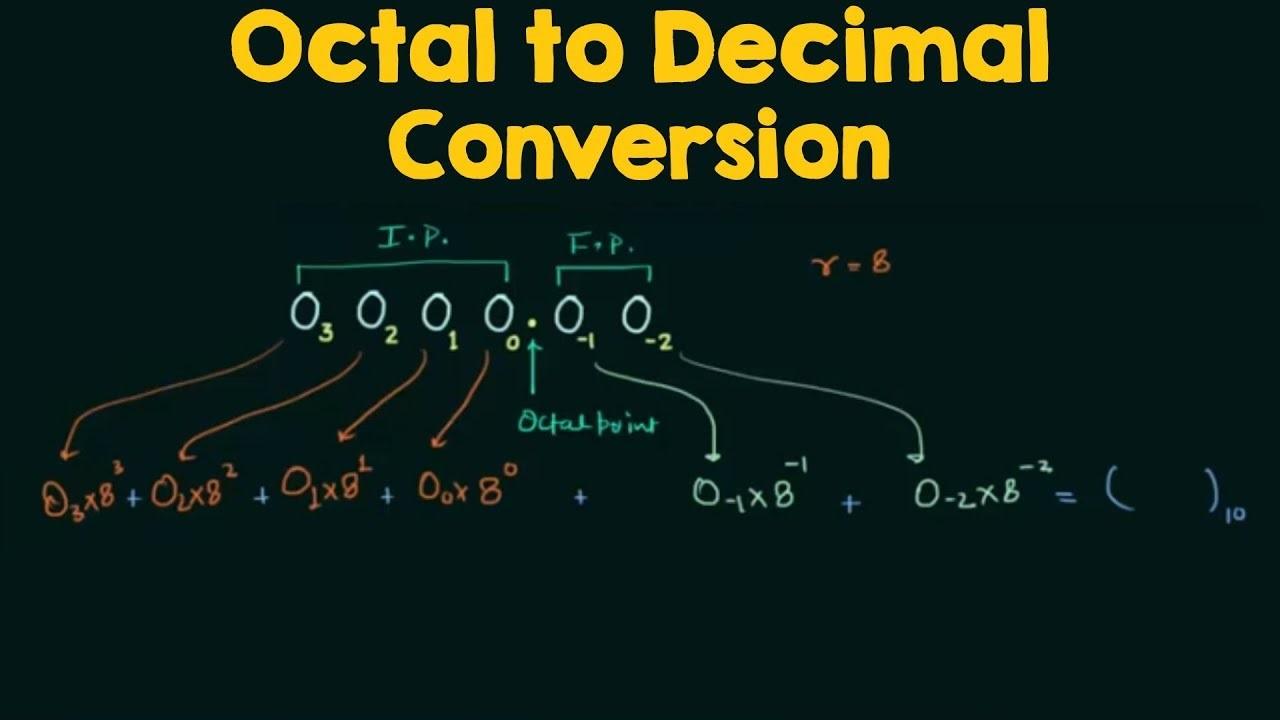Converting numbers from the octal system to the decimal system is a fundamental concept in mathematics and computer science. Understanding this conversion process is not only critical for those studying these fields but also for anyone interested in the underlying mechanisms of computing.
Introduction to Number Systems
The world of mathematics and computing is rich with various number systems. While most people are familiar with the decimal system, the octal to decimal systems are predominantly used in computing. The decimal system, or base-10, is the standard system for denoting integer and non-integer numbers. It is the most widely used number system, employed in most daily applications. In contrast, the octal system, or base-8, uses eight symbols: 0-7. Historically, the octal system was popular in computing because of its simplicity in converting to and from binary, the language of computers.
What is the Octal Number System?
The octal number system is a base-8 numeral system that uses only eight digits – 0 through 7. Each digit in an octal number represents a power of eight, in a similar manner to how each digit in a decimal number represents a power of ten. For instance, the octal number 10 in this system represents the decimal number 8 (one eight and zero units).
The Importance of Octal in Computing
In computing, the octal system was used extensively in the early days of computer science. It was particularly popular in the 1960s and 1970s when computers were less advanced. Octal numbers provided a more compact representation of binary numbers, which made programming and system design more manageable. Although its use has decreased with the rise of decimal notation, understanding octal is still important for legacy systems and certain software applications.
Converting Octal to Decimal
To convert an octal number to decimal, each digit of the octal number must be multiplied by 8 raised to the power of its position, counting from right to left, starting at 0. The sum of these products gives the decimal equivalent.
Step-by-Step Conversion Process
Consider the octal number 157. To convert this to a decimal, we would calculate as follows:
- 1×82=1×64=64
- 5×81=5×8=40
- 7×80=7×1=7
Adding these together, 64+40+7=111. Therefore, 157 in octal is equal to 111 in decimal.
Computational Approach to Conversion
In the realm of computer science, converting octal to decimal is often handled through programming. Languages like Python can easily manage the conversion of large numbers, which is particularly useful when dealing with data processing and binary file manipulations. A Python function can be written to automate this process, handling even octal numbers that are thousands of digits long.
Challenges with Large Numbers
While modern computing can handle large numbers, there are computational limits depending on the programming environment and data type. These limits are crucial to consider when designing systems or algorithms for conversion, especially in a high-performance computing context.
Practical Applications
Beyond its historical significance in computing, understanding octal to decimal conversion is crucial for working with various software, especially those that interact with low-level system components or legacy systems. It’s also important in fields like data science and network security, where binary and octal data representations are often encountered.
The Decreasing but Persistent Relevance of Octal
Although the octal system’s popularity has waned in favor of decimal, its simplicity and historical significance make it an interesting area of study. Understanding octal can also provide deeper insights into how early computers were designed and functioned.
Conclusion
Understanding the conversion from octal to decimal is more than a mathematical exercise; it’s a window into the history and evolution of computing. While modern systems may use more advanced number systems, the principles behind these conversions remain fundamental to understanding computer operations and programming logic. As technology continues to evolve, the relevance of these fundamental concepts remains, highlighting the importance of a strong foundation in number systems for anyone venturing into the fields of mathematics, computer science, and technology.



